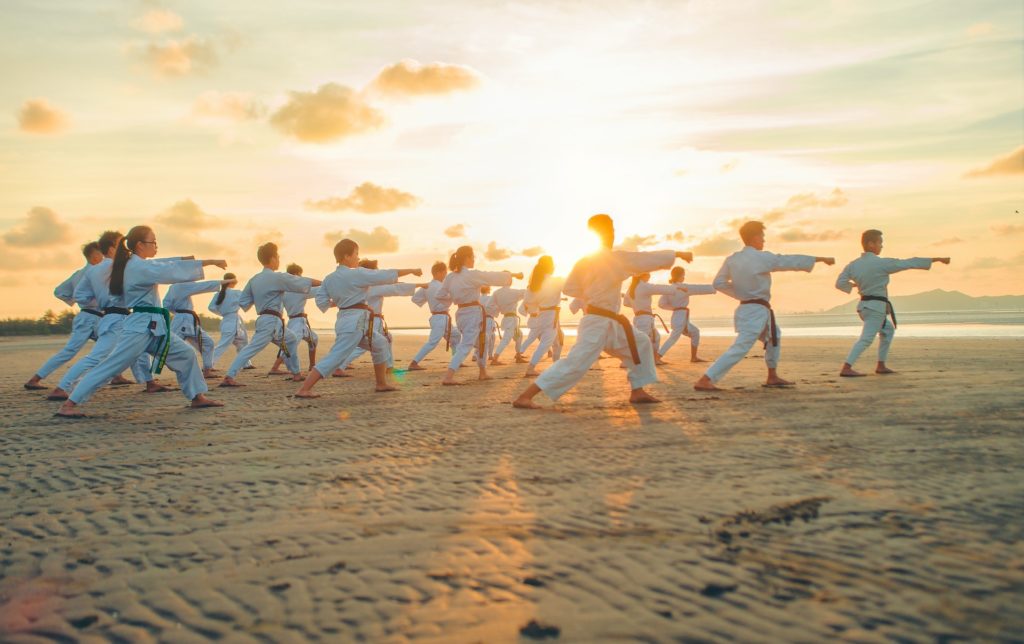Mat Wars: Exploring the Thrilling Worlds of Judo and Jiu-Jitsu

Hey there! Ever wondered about the differences between Judo and Jiu-Jitsu? Well, you’re in the right place. Let’s dive into the exciting world of martial arts, specifically focusing on what sets Judo and Jiu-Jitsu apart. Whether you’re a martial arts enthusiast or just curious, this exploration is for you.
Understanding Judo
Let’s kick it off with Judo. Picture this: it all started in Japan and made its way to the UK. Judo is like a strategic dance where you aim for maximum impact with minimum effort. Quick throws and powerful moves are the name of the game. Think of it as a sport that’s all about balance, leverage, and lightning-fast action.
It’s not just about throwing people around; it’s about being smart and efficient. In Judo, you want the most impact with the least effort – a bit like a martial arts magic trick. Imagine a sport where your balance and leverage become your secret weapons, making every move count.
Now, let’s talk about the exciting part – the moves in Judo. Forget about slow and steady; Judo is all about standing throws. Picture athletes showcasing their strength and agility, tossing opponents like action heroes. But here’s the twist – it’s not just about muscle; it’s about using your opponent’s energy against them. Quick, powerful movements are the key to success in Judo.
Jiu-Jitsu: A Different Approach
Now, let’s shift gears to Jiu-Jitsu. This martial art has its roots in Japan and later found its way to the UK, but it took a different path. While Judo focuses on standing throws, Jiu-Jitsu is all about ground-based action, like a tactical chess match on the floor.
Imagine intense grappling sessions where opponents engage in a strategic chess match, vying for control. But that’s not all; Jiu-Jitsu introduces a whole new dimension with submissions and joint locks. It’s like a martial arts puzzle where you strategically piece together your moves, anticipating your opponent’s every action.
Jiu-Jitsu isn’t just about sport; it’s about real-world self-defence too. The techniques taught in Jiu-Jitsu are practical for various situations you might encounter in everyday life. It’s not just about winning tournaments; it’s about being prepared for whatever comes your way.
Overlapping Elements
Now, let’s explore the common ground between Judo and Jiu-Jitsu.
Shared Japanese Roots
Both these martial arts have their roots deeply embedded in the rich tapestry of Japanese culture. The connection goes beyond just geographical origins; it’s a historical journey that binds them. The common terminology used in both Judo and Jiu-Jitsu reflects not only linguistic similarities but also a shared understanding of the art’s fundamental principles.
Belt Systems
Both Judo and Jiu-Jitsu follow a structured system of recognition, known as the belt system. This system, comprising Kyu and Dan ranks, serves as a visible representation of an individual’s skill and experience. Achieving mastery and recognition is a shared goal in both martial arts
Training Approaches
Now, let’s jump into the training methods of both Judo and Jiu-Jitsu.
Judo Training
Judo training is all about dynamic practices. Picture “Randori,” a free practice where athletes engage in live, unscripted movements, and “Katame-waza,” focusing on ground techniques. It’s a blend of strategy, agility, and quick thinking.
Jiu-Jitsu Training
Jiu-Jitsu training brings a different flavour. Picture “sparring” or “rolling,” where practitioners engage in live, dynamic exchanges on the mat. It’s not just about strength; it’s about technique and adaptability. Additionally, drilling techniques from various positions hones the skills needed for ground-based combat.
Competitive Aspects
In the vibrant world of Judo tournaments, the action is fast-paced and exhilarating. Athletes step onto the mat with a goal – victory. How is victory achieved? Through a carefully structured points system. It’s not just about executing throws; control is the name of the game.
Points are scored for precise throws and maintaining dominance over the opponent. Imagine the intensity as athletes strive for that perfect throw, the crowd erupting in cheers with each well-executed move. It’s a thrilling display of skill, strategy, and sheer determination.
Jiu-Jitsu competitions bring a different kind of intensity. Points are earned for gaining dominant positions and successful submissions. It’s not just about throws; it’s about strategic ground control. Imagine the energy as practitioners navigate the mat, aiming for advantageous positions and cleverly applying submissions. The diversity of techniques and the dynamic nature of ground-based combat make Jiu-Jitsu competitions a captivating spectacle.
Alright, we’ve covered a lot about Judo and Jiu-Jitsu. From the powerful throws in Judo to the ground-based intricacies of Jiu-Jitsu, each martial art brings its own vibe. Whether you’re into the fast-paced excitement of Judo tournaments or the strategic intensity of Jiu-Jitsu competitions, both have something cool to offer.
As you check out these martial arts, just remember: they’re diverse, and that’s the cool part. Each has its strengths, and your choice depends on what you’re into. Whether you end up on the Judo mat or the Jiu-Jitsu mat, it’s all about figuring out what you enjoy, getting better at it, and, of course, having a blast.
So, what’s your pick? The thunderous throws of Judo or the ground-game brilliance of Jiu-Jitsu? It’s up to you.

